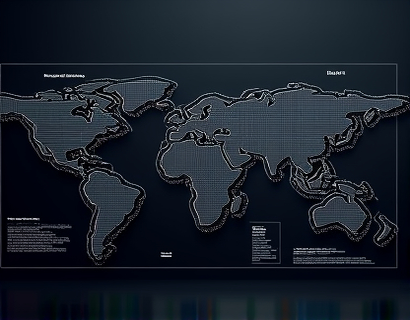Unlocking Complex System Insights: Advanced Software for Graph Theory and Fluid Dynamics Analysis
In the realm of mathematical modeling and fluid mechanics, the ability to analyze and understand complex systems is paramount. Researchers and engineers are constantly seeking tools that can streamline data analysis, enhance visualization, and drive innovative discoveries. This article delves into the cutting-edge software solutions designed specifically for graph theory and fluid dynamics analysis, empowering experts to unlock deeper insights and optimize performance in intricate systems.
Graph Theory Analysis: A Foundation for Complex Systems
Graph theory, a branch of mathematics that studies the properties and applications of graphs, plays a crucial role in modeling and analyzing complex systems. A graph consists of nodes or vertices connected by edges, providing a powerful framework to represent relationships and interactions within various domains, from social networks to transportation systems. Advanced software tools for graph theory analysis offer sophisticated algorithms and visualization techniques to explore these networks effectively.
One of the key features of modern graph analysis software is its ability to handle large-scale networks efficiently. These tools employ optimized data structures and parallel processing techniques to manage vast amounts of data, ensuring that even the most complex graphs can be analyzed within a reasonable timeframe. For instance, algorithms for shortest path finding, community detection, and centrality measures are integral components of these software solutions, enabling researchers to uncover hidden patterns and critical nodes within a network.
Enhanced Visualization for Better Insights
Visualization is a critical aspect of graph theory analysis, as it allows researchers to interpret and communicate complex data more intuitively. Advanced software solutions provide a range of visualization options, from static graphs to dynamic, interactive visualizations. These tools support various layout algorithms, such as force-directed, hierarchical, and circular layouts, to represent graphs in a manner that highlights their structural properties.
Interactive visualizations enable users to zoom in and out, pan, and hover over nodes to retrieve detailed information. This level of interactivity is particularly useful for exploring large networks, where static representations would be overwhelming. Moreover, color coding and edge weight representation help in identifying clusters, bottlenecks, and other significant features of the graph, facilitating a deeper understanding of the system under study.
Fluid Dynamics Analysis: Simulating Complex Fluid Behavior
Fluid dynamics, the study of fluids in motion, is essential for a wide range of applications, including aerospace engineering, environmental science, and biomedical research. Simulating fluid behavior accurately requires solving complex partial differential equations that govern fluid flow, such as the Navier-Stokes equations. Advanced software tools for fluid dynamics analysis provide robust numerical methods and high-fidelity simulations to tackle these challenges.
These software solutions often incorporate finite volume, finite element, and lattice Boltzmann methods to discretize and solve fluid dynamics problems. The ability to handle multiphase flows, turbulence, and complex geometries sets these tools apart, allowing researchers to model real-world scenarios with high precision. Additionally, the integration of machine learning techniques can enhance the accuracy and efficiency of fluid simulations, reducing computational time and resource requirements.
Seamless Integration of Graph Theory and Fluid Dynamics
The intersection of graph theory and fluid dynamics presents unique opportunities for advanced research. For example, graph-based methods can be used to discretize fluid domains, simplifying the computational domain and reducing the complexity of the problem. Conversely, fluid dynamics simulations can provide valuable data for graph theory analysis, such as identifying flow patterns and critical points within a network.
Software tools that bridge these two fields offer a comprehensive platform for researchers to explore these synergies. By combining graph theory algorithms with fluid dynamics simulations, these tools enable a more holistic approach to understanding complex systems. This integration is particularly beneficial in areas like networked fluid systems, where the interaction between nodes and fluid flow is crucial.
User-Friendly Interfaces and Advanced Features
To maximize the utility of these advanced software solutions, user-friendly interfaces are essential. Modern tools provide intuitive graphical user interfaces (GUIs) that guide users through the analysis process, from data input to result interpretation. These interfaces often include step-by-step tutorials and context-sensitive help, making the software accessible to both novice and expert users.
Beyond the user interface, these software solutions come packed with advanced features to enhance the research experience. For graph theory analysis, features such as custom algorithm development, scripting support, and integration with external data sources are invaluable. In fluid dynamics, advanced solvers, adaptive mesh refinement, and real-time visualization capabilities elevate the software's performance and versatility.
Case Studies and Real-World Applications
To illustrate the practical impact of these software tools, consider a few real-world applications. In the field of traffic flow optimization, graph theory analysis can model road networks to identify congestion points and optimize traffic signal timings. Advanced visualization helps urban planners understand the impact of different scenarios, leading to more efficient transportation systems.
In environmental science, fluid dynamics simulations are crucial for predicting weather patterns and understanding ocean currents. Software tools that combine graph theory and fluid dynamics can model complex atmospheric and marine networks, providing insights into climate change and its effects on global systems. These simulations help researchers develop more accurate predictive models and inform policy decisions.
Future Directions and Emerging Trends
The field of software for graph theory and fluid dynamics analysis is rapidly evolving, driven by advancements in computational power, algorithmic innovations, and the increasing availability of big data. One emerging trend is the integration of artificial intelligence and machine learning to automate and optimize the analysis process. These technologies can predict optimal parameters for simulations, identify patterns in large datasets, and even suggest new research directions.
Another area of growth is the development of cloud-based platforms that offer scalable computing resources and collaborative tools. These platforms enable researchers from different institutions to work together on large-scale projects, sharing data and computational resources seamlessly. The cloud also facilitates access to high-performance computing (HPC) clusters, making advanced simulations more accessible to a broader audience.
Conclusion
Advanced software solutions for graph theory and fluid dynamics analysis are revolutionizing the way researchers and engineers approach complex systems. By providing powerful tools for data analysis, visualization, and simulation, these software solutions unlock deeper insights and drive innovative discoveries. As the field continues to evolve, the integration of AI, cloud computing, and collaborative platforms will further enhance the capabilities of these tools, opening new frontiers in mathematical modeling and fluid mechanics.










































